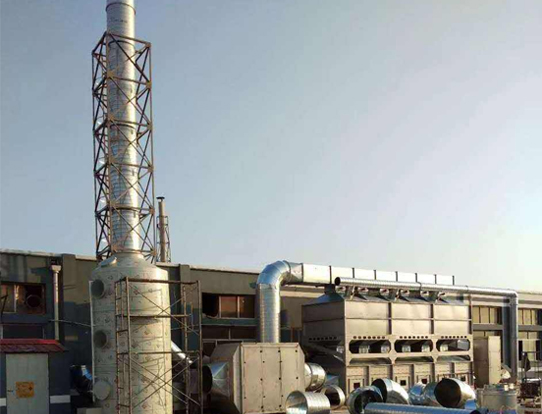In industrial production, a large amount of volatile organic gases will be produced, which is usually called VOCs waste gas. VOCs emissions into the air will cause air pollution, affect the environment, destroy the ecological chain, and threaten human health. However, if there is industrial production, there will be pollution. Therefore, the key to solving the pollution problem is to select appropriate methods to control and treat pollution.
Then how should the VOCs waste gas discharged from industrial production be treated?
At present, there are many waste gas treatment technologies adopted by domestic environmental protection enterprises, such as activated carbon adsorption, catalytic combustion, photo oxidation, plasma, UV photolysis, thermal combustion, etc., Activated carbon adsorption, catalytic combustion and photo oxidation catalysis are more common. Bian Xiao mainly introduces three methods for you:
1、 Activated carbon adsorption method
1. Process principle:
When activated, the surface area and pore structure of activated carbon gradually formed, providing a reaction site for the adsorption process. The porous structure provides a large surface area, which makes the activated carbon very easy to collect exhaust gas. Molecules on the pore wall of activated carbon can generate strong gravity and suck waste gas in the medium into the pore. The diameter of waste gas molecules should be smaller than the pore diameter of activated carbon to ensure that impurities are fully absorbed. Activated carbon not only contains carbon, but also contains a small amount of oxygen and hydrogen on its surface, such as carboxyl, hydroxyl, phenols, lipids, ethers, etc. The treated waste gas is discharged from the chimney 15m away from the ground through the centrifugal fan!
2. Advantages and disadvantages
Advantages: high adsorption efficiency, wide application range, convenient maintenance, and can handle various mixed waste gases.
Disadvantages: high cost;
2、 Catalytic combustion
1. Process principle:
Catalytic combustion equipment It is composed of flame arrester, heat exchanger, catalytic bed and air. Compared with direct combustion, catalytic combustion has lower ignition temperature and more complete combustion. Under the action of platinum, palladium and other precious metal catalysts, the exhaust gas containing organic pollutants in the exhaust gas is oxidized into carbon dioxide and water. The catalyst can not change the original chemical balance, but can only change the reaction rate. The nature of the catalyst itself will not change before and after the reaction!
The exhaust gas is filtered by the flame arrester and then enters the heat exchanger. After being heated, it enters the preheating chamber and is heated to the combustion temperature (200~350 ℃). Under the action of the catalyst, oxidation reaction occurs, generating harmless water and carbon dioxide, and releasing a certain amount of heat. After the high-temperature gas reacts, it enters the heat exchanger again. After heat exchange, the induced draft fan is discharged into the atmosphere at a lower temperature.

2. Advantages of catalytic combustion equipment:
(1) The purification efficiency is up to 97%, the equipment has a long service life and is renewable.
(2) The protection facilities are complete and there is no safety accident.
(3) It only consumes fan power during operation, and the heating mechanism automatically compensates, which saves energy.
(4) The waste heat can be used in other processes, reducing power consumption and saving costs!
Third, photocatalytic method
1. Process principle
Photocatalysis uses ultraviolet light to decompose oxygen molecules in the air to produce free oxygen, and then free oxygen combines with oxygen molecules to produce ozone. The organic components in the exhaust gas can be removed by the strong oxidation of ozone. The reaction equation is:
UV+O2 → O -+O * (active oxygen) O+O2 → O3 (ozone)
After the exhaust equipment transmits the exhaust gas to the purification equipment, the purification equipment uses high-energy ultraviolet light and ozone to decompose and oxidize the industrial exhaust gas, degrade the exhaust gas into low molecular compounds, and then discharge the exhaust gas to the outside through the exhaust pipe. From the perspective of air purification, the combination efficiency of C-band ultraviolet and ozone is high, and pulse corona technology can eliminate harmful gases. C-band ultraviolet light is mainly used to remove hydrogen sulfide, ammonia, benzene, toluene, xylene, formaldehyde and other gases, and decompose organics into small molecular inorganic substances.
2. Advantages of photo oxidation catalysis:
(1) High deodorization efficiency, up to 97-99%;
(2) Low cost, convenient operation, no noise, no special management.
(3) Small floor area, high anti-corrosion and explosion-proof performance.
(4) Imported material, stainless steel, service life more than 15 years.




